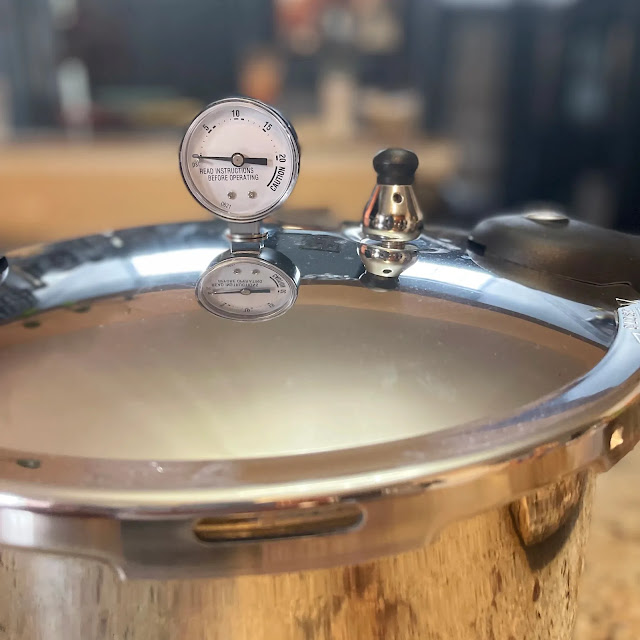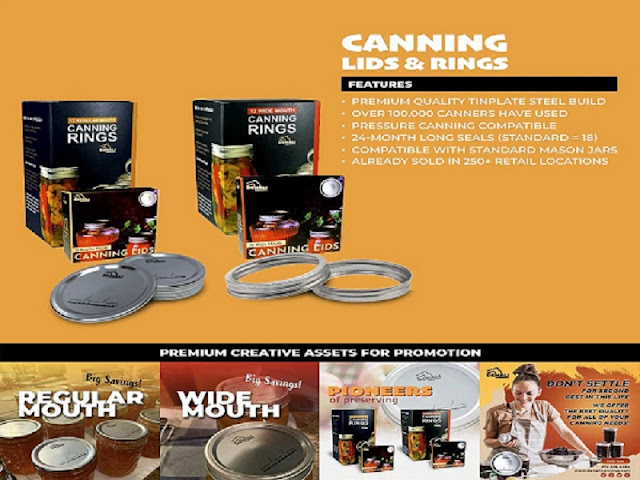Preserving The Best: The Weighted Gauge Pressure Canner And Its Importance
Home canning is a time-honored tradition that allows food enthusiasts to preserve their favorite fruits, vegetables, and other perishable items, ensuring they can be enjoyed year-round. One of the most crucial tools in this process is the weighted gauge pressure canner, which provides a safe and efficient way to can low-acid foods. In this blog, we will delve into a gauge pressure canner, how it works, and why it is an indispensable tool for any dedicated home canner.
A weighted gauge pressure canner is a specialized cooking pot designed to heat jars filled with low-acid foods to a temperature that kills harmful bacteria and microorganisms. Unlike high-acid foods, such as fruits and pickles, low-acid foods, like vegetables, meat, and fish, require higher temperatures to ensure their safety during storage. It creates a high-pressure, high-temperature environment within the canning pot.
How Does It Work?
Its working principle is relatively simple. The canner features a tight-fitting cover, a pressure gauge, and a pressure release valve. The pressure gauge is crucial in indicating the canner's internal pressure. This can be either a dial gauge or a weighted gauge.
Dial Gauge vs. Weighted Gauge
Dial Gauge: A dial gauge visually displays the pressure level inside the canner. It shows the pressure in pounds per square inch and needs to be monitored closely during the canning process. Dial gauges should be tested for accuracy before each canning season and can lose accuracy over time.
Weighted Gauge: A weighted gauge is a simpler alternative to the dial gauge. It consists of a weighted disk that sits on top of the vent pipe. As the canner heats up and pressure builds, the steam pushes the weighted disk up, releasing excess pressure and preventing it from going beyond safe levels.
The Canning Process
The working procedure of using pressure canners for canning involves the following steps:
Preparing the Jars: Clean and sterilize the jars, lids, and bands to ensure they are contaminants-free.
Packing the Jars: Fill the jars with the prepared low-acid food, allowing the required space given in the canning instructions.
Sealing the Jars: Apply the lids and bands to the jars to create a tight seal.
Heating the Canner: Place the filled and sealed jars on the rack and add water to the specified level. Lock the lid in place.
Building Pressure: Heat the canner until it reaches the recommended pressure level according to the canning recipe.
Timed Processing: Maintain the pressure at the required level for the specified time per the recipe.
Cooling and Storage: Turn off the heat and allow the canner to cool naturally when the timed processing is complete. Remove the jars and put them in a cold, dark location to keep after the pressure has dropped to zero.
Why Is It Essential for Home Canners?
Safety: It ensures that low-acid foods are heated to a temperature that eliminates harmful bacteria, preventing spoilage and foodborne illnesses.
Efficiency: Compared to traditional boiling water bath canning, the pressure canner processes food more quickly, preserving its nutritional value and flavors.
Versatility: It can be used for canning a wide range of low-acid foods, making it a versatile tool for home canning enthusiasts.
.jpg)



Comments
Post a Comment